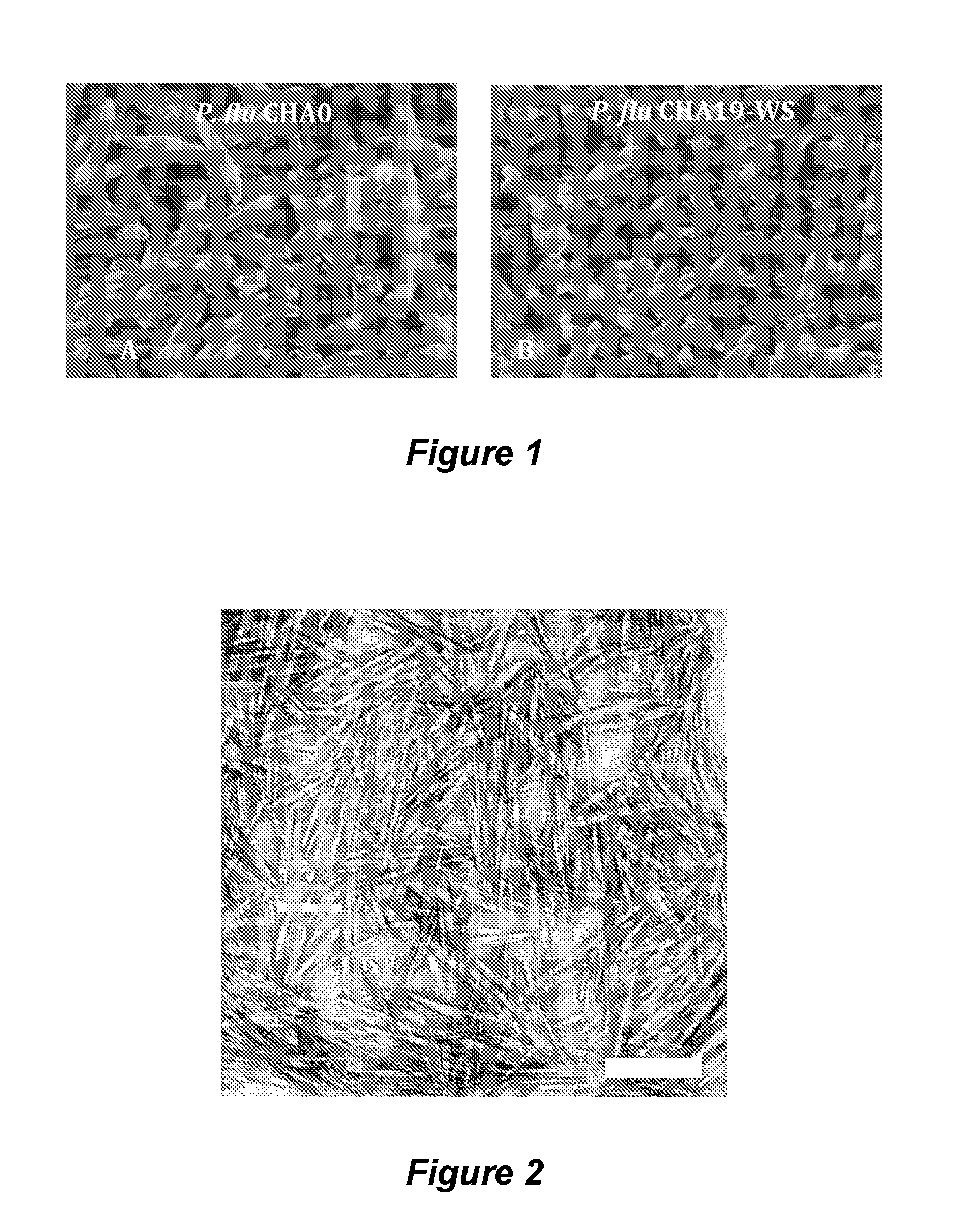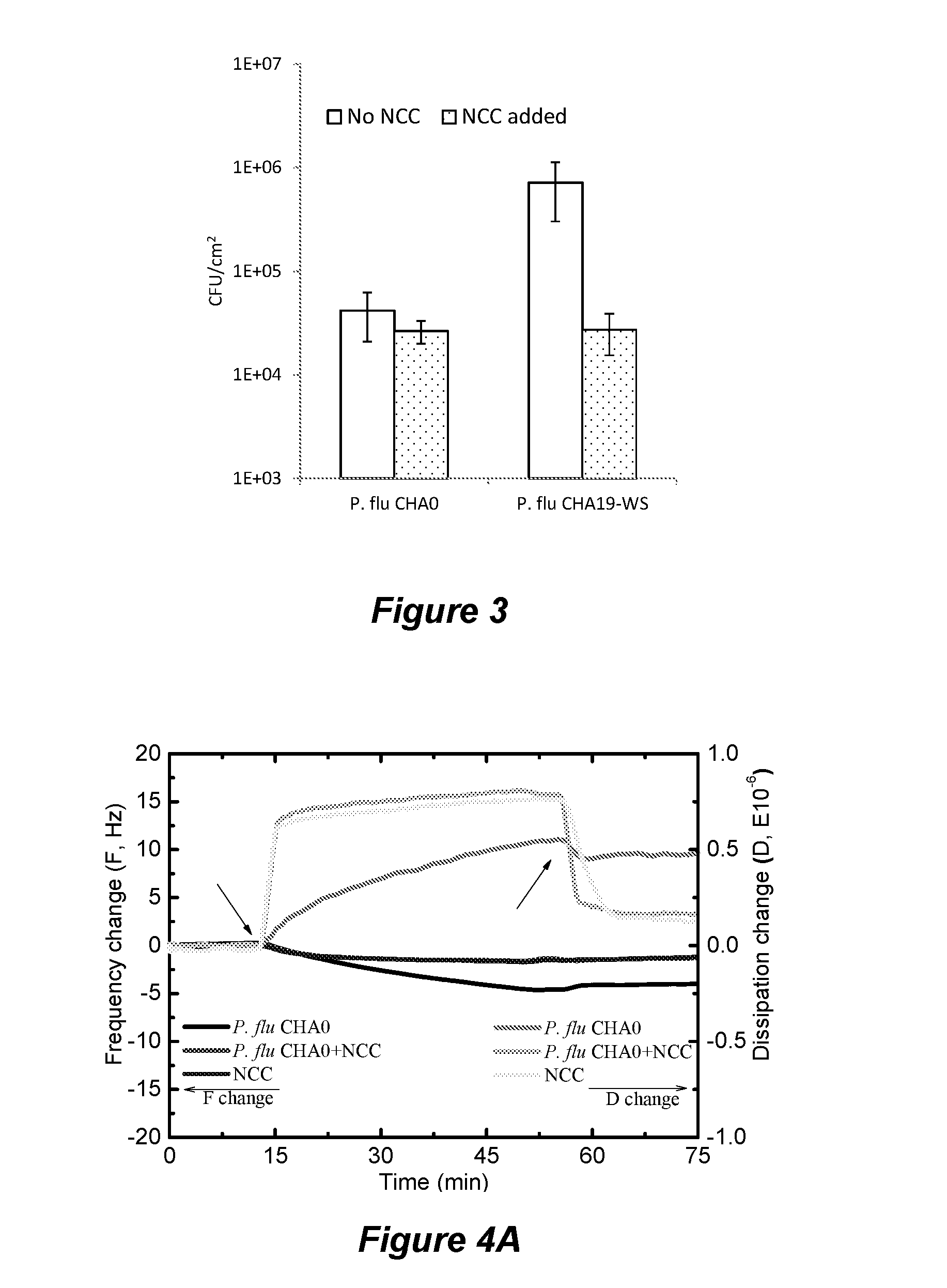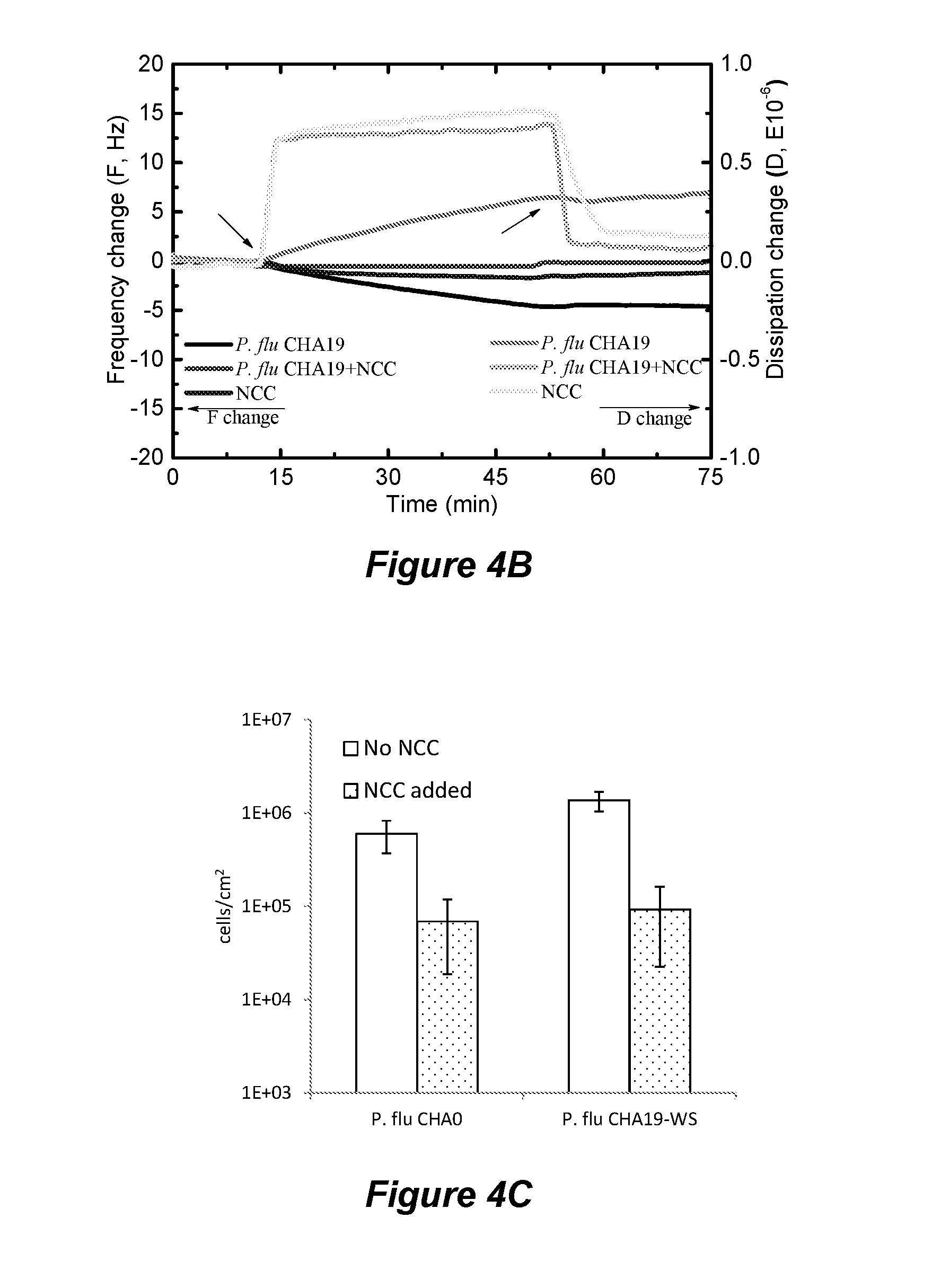Nanocrystalline cellulose hydrogels for inhibition of bacterial adhesion
a technology of nanocrystalline cellulose and bacterial adhesion, which is applied in the direction of coatings, catheter, etc., can solve the problem of reducing the preferential growth of antibiotic-resistant bacteria, and achieve the effect of reducing the frequency or severity of infections
- Summary
- Abstract
- Description
- Claims
- Application Information
AI Technical Summary
Benefits of technology
Problems solved by technology
Method used
Image
Examples
example 1
Impact of Nanocrystalline Cellulose on the Adhesion of Pseudomonas fluorescence Bacteria
[0061]Deposition of two Pseudomonas fluorescence strains (CHA0 and CHA19-WS) to silica surfaces was studied in both static and dynamic flow systems and in the absence and presence of nanocrystalline cellulose (NCC). The two strains possess different extracellular polymeric substance (EPS) producing capacity. Within the presence of NCC, bacteria with more EPS coverage aggregate more significantly compared to bacteria with less EPS coverage. NCC significantly reduced bacterial initial adhesion to silica surfaces. Bacteria deposition was hindered to a greater extent for bacteria with more EPS coverage than those with less EPS coverage. Quartz crystal microbalance with dissipation (QCM-D) was used to further analyze the mechanisms by which NCC reduced bacterial adhesion. The classic DLVO theory for colloid stability failed to predict the bacterial adhesion behavior in this study. Surface charge heter...
example 2
Role of Solution Chemistry on the Aggregation and Initial Adhesion of Escherichia coli
[0122]The aggregation and initial adhesion (to silica surfaces) of bacteria are affected greatly by solution chemistry, including pH, ionic strength (IS). The role of solution chemistry on the aggregation and deposition of E. coli K12 on silica surfaces were investigated in NaCl solutions under electrostatically unfavorable attachment conditions varying in pH and IS, and in the absence and presence of cellulose nanocrystals (CNC). pH and IS were found to have a marked effect on bacterial aggregation and deposition (to silica surfaces) in the absence and presence of CNC. Generally, with the presence of CNC, bacterial aggregation was enhanced by increasing pH and increasing IS. Lower deposition rates observed at higher IS and higher pH were attributed to aggregation of bacteria resulting in decreased convective-diffusive transport to the silica surface. Calculating classic DLVO interactions failed t...
example 3
Organic Compounds Improve CNC-Induced Aggregation and Reduce Bacterial Adhesion
[0153]It was surprisingly discovered that certain organic compounds can be added to a CNC composition to increase the ability of CNC to aggregate bacteria and reduce or prevent biofilm formation. While humic acid and monosaccharides alone promoted only a minor amount of aggregation of bacterial cells, it was found that humic acid and monosaccharides such as glucose (e.g., at about 1 mg / mL) significantly improve bacterial aggregation in the presence of CNCs. As shown in FIG. 11, the addition of humic acid or glucose significantly increases the aggregation of bacteria by at least three-fold, typically 10-20 fold. Humic acid used was IHSS Suwannee River Humic Acid Standard II 2S101H, but a variety of humic acids can be effective. Also, the presence of organic additives with CNC reduces bacterial adhesion under both static and hydrodynamic flow conditions, as shown in FIG. 12. Thus, these organic additives ca...
PUM
| Property | Measurement | Unit |
|---|---|---|
| Molar density | aaaaa | aaaaa |
| Molar density | aaaaa | aaaaa |
| Density | aaaaa | aaaaa |
Abstract
Description
Claims
Application Information
 Login to View More
Login to View More - R&D
- Intellectual Property
- Life Sciences
- Materials
- Tech Scout
- Unparalleled Data Quality
- Higher Quality Content
- 60% Fewer Hallucinations
Browse by: Latest US Patents, China's latest patents, Technical Efficacy Thesaurus, Application Domain, Technology Topic, Popular Technical Reports.
© 2025 PatSnap. All rights reserved.Legal|Privacy policy|Modern Slavery Act Transparency Statement|Sitemap|About US| Contact US: help@patsnap.com



